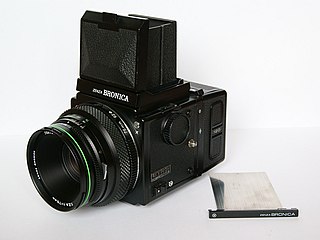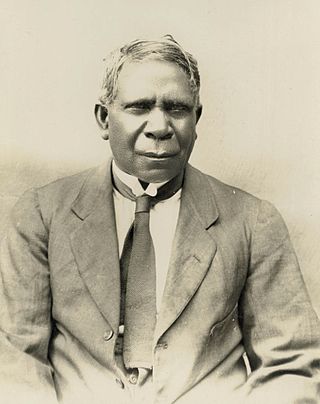
Carl Zeiss AG, branded as ZEISS, is a German manufacturer of optical systems and optoelectronics, founded in Jena, Germany in 1846 by optician Carl Zeiss. Together with Ernst Abbe and Otto Schott he laid the foundation for today's multinational company. The current company emerged from a reunification of Carl Zeiss companies in East and West Germany with a consolidation phase in the 1990s. ZEISS is active in four business segments with approximately equal revenue in almost 50 countries, has 30 production sites and around 25 development sites worldwide.
M2, M-2, M.2 or M02 may refer to:

In the United States, Canada and the United Kingdom, grips are camera support equipment technicians in the filmmaking and video production industries. They constitute their own department on a film set and are directed by a key grip. Grips have two main functions: The first is to work closely with the camera department to provide camera support, especially if the camera is mounted to a dolly, crane, or in an unusual position, such as the top of a ladder. Some grips may specialize in operating camera dollies or camera cranes. The second function is to work closely with the electrical department to create lighting set-ups necessary for a shot under the direction of the director of photography.
Grips' responsibility is to build and maintain all the equipment that supports cameras. This equipment, which includes tripods, dollies, tracks, jibs, cranes, and static rigs, is constructed of delicate yet heavy duty parts requiring a high level of experience to operate and move. Every scene in a feature film is shot using one or more cameras, each mounted on highly complex, extremely expensive, heavy duty equipment. Grips assemble this equipment according to meticulous specifications and push, pull, mount or hang it from a variety of settings. The equipment can be as basic as a tripod standing on a studio floor, to hazardous operations such as mounting a camera on a 100 ft crane, or hanging it from a helicopter swooping above a mountain range.
Good Grips perform a crucial role in ensuring that the artifice of film is maintained, and that camera moves are as seamless as possible. Grips are usually requested by the DoP or the camera operator. Although the work is physically demanding and the hours are long, the work can be very rewarding. Many Grips work on both commercials and features.

A professional video camera is a high-end device for creating electronic moving images. Originally developed for use in television studios or with outside broadcast trucks, they are now also used for music videos, direct-to-video movies, corporate and educational videos, wedding videos, among other uses. Since the 2000s, most professional video cameras are digital.

The Four Thirds System is a standard created by Olympus and Eastman Kodak for digital single-lens reflex camera (DSLR) design and development. Four Thirds refers to both the size of the image sensor (4/3") as well as the aspect ratio (4:3). The Olympus E-1 was the first Four Thirds DSLR, announced and released in 2003. In 2008, Olympus and Panasonic began publicizing the Micro Four Thirds system, a mirrorless camera system which used the same sensor size; by eliminating the reflex mirror, the Micro Four Thirds cameras were significantly smaller than the Four Thirds cameras. The first Micro Four Thirds cameras were released in 2009 and the final Four Thirds cameras were released in 2010; by that time, approximately 15 Four Thirds camera models had been released by Olympus and Panasonic in total. The Four Thirds system was quietly discontinued in 2017, six years after the final cameras were released.

Nikkor is the brand of lenses produced by Nikon Corporation, including camera lenses for the Nikon F-mount.

Jos. Schneider Optische Werke GmbH is a manufacturer of industrial and photographic optics. The company was founded on 18 January 1913 by Joseph Schneider as Optische Anstalt Jos. Schneider & Co. at Bad Kreuznach in Germany. The company changed its name to Jos. Schneider & Co., Optische Werke, Kreuznach in 1922, and to the current Jos. Schneider Optische Werke GmbH in 1998.

Bronica also Zenza Bronica was a Japanese manufacturer of classic medium-format roll film cameras and photographic equipment based in Tokyo, Japan. Their single-lens reflex (SLR) system-cameras competed with Pentax, Hasselblad, Mamiya and others in the medium-format camera market.

In photography, a tripod is a portable device used to support, stabilize and elevate a camera, a flash unit, or other videographic or observational/measuring equipment. All photographic tripods have three legs and a mounting head to couple with a camera. The mounting head usually includes a thumbscrew that mates to a female-threaded receptacle on the camera, as well as a mechanism to be able to rotate and tilt the camera when it is mounted on the tripod. Tripod legs are usually made to telescope, in order to save space when not in use. Tripods are usually made from aluminum, carbon fiber, steel, wood or plastic.
Television crew positions are derived from those of film crew, but with several differences.

Lens speed is the maximum aperture diameter, or minimum f-number, of a photographic lens. A lens with a larger than average maximum aperture is called a "fast lens" because it can achieve the same exposure as an average lens with a faster shutter speed. Conversely, a smaller maximum aperture is "slow" because it delivers less light intensity and requires a slower (longer) shutter speed.

Gitzo S.A. is a manufacturer of photographic accessories, including bags, but specialising in tripods and supports.

A hydraulophone is a tonal acoustic musical instrument played by direct physical contact with water where sound is generated or affected hydraulically. The hydraulophone was described and named by Steve Mann in 2005, and patented in 2011. Typically, sound is produced by the same hydraulic fluid in contact with the player's fingers. It has been used as a sensory exploration device for low-vision individuals.

This is a timeline of Australian inventions consisting of products and technology invented in Australia from pre-European-settlement in 1788 to the present. The inventions are listed in chronological order based on the date of their introduction.

Videndum plc is a manufacturer of hardware and software for the film industry founded in 1910 and based in Richmond, London. It is listed on the London Stock Exchange.
Brethren is an Australian hip hop duo from Sydney formed in 1989. The group comprises Matthew Peet a.k.a. "Mistery" and Claude Rodriguez a.k.a. Wizdm. They have released two albums, two EPs and a number of singles and collaborations. They have performed live locally, notably at festivals including The Big Day Out, Livid and Blackstump Music Festival.
Classic Whitney: Live from Washington, D.C., were live concerts by Whitney Houston.

Sachtler is a manufacturer of film and video camera support products. The company was founded in 1958 and was bought by the United Kingdom's Vitec Group in 1995.
Panther GmbH is a film technical company situated in Aying, Munich. It develops and produces professional camera cranes and dollies. It built the first ever electro-mechanical camera dolly, the "Super Panther". Company founder Erich Fitz received the 1990 Oscar "Scientific & Engineering Award".
Vinten is a brand of lightweight manual and robotic camera supports such as tripods, pedestals, pan and tilt heads, robotic heads, and robotic tracks, many of which are aimed at the television studio and outside broadcast markets. The brand was established by William Vinten when he started manufacturing Kinemacolor projectors for Charles Urban in 1909. The brand is wholly-owned by Videndum plc.














